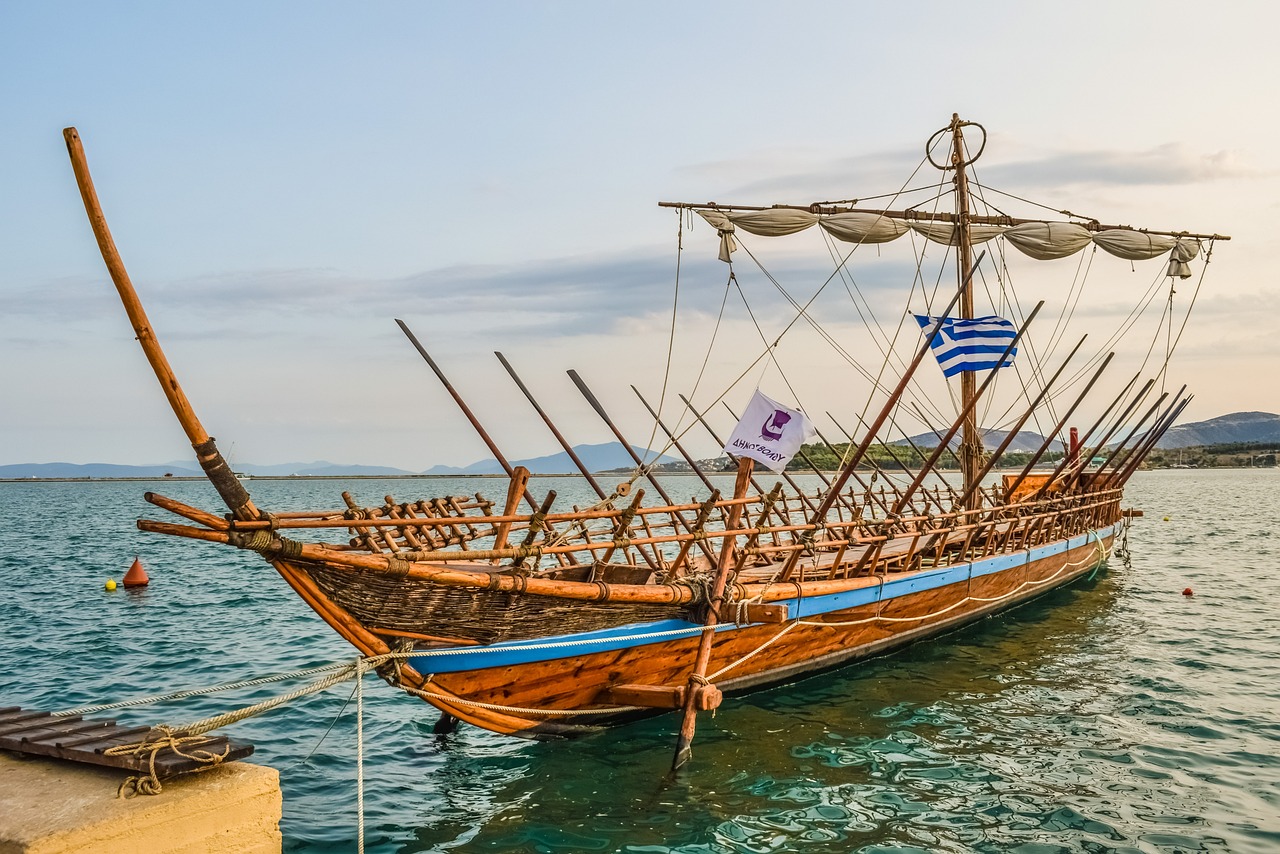In Greek mythology, the Argonauts refer to a group of fifty legendary heroes who journeyed with Jason aboard the ship Argo in their quest to obtain the Golden Fleece. The narrative unfolds against the backdrop of a power struggle in Iolcos, Thessaly, where Jason’s uncle Pelias seized the throne that rightfully belonged to Jason’s father, Aeson. Pelias promised to relinquish his kingship to Jason, contingent on his successful retrieval of the fabled Golden Fleece from Colchis.
The Golden Fleece’s history can be traced back to Jason’s uncle, Athamas, who had two children, Phrixus and Helle, with his first wife, Nephele, the goddess of clouds. Ino, his second wife, harbored malice toward Phrixus and Helle. She persuaded Athamas to offer Phrixus as a sacrifice to end a devastating famine. However, before her scheme could unfold, Nephele intervened, providing a ram with a golden fleece to facilitate the siblings’ escape. Tragically, during their flight over the sea, Helle fell into the water, perishing in what would later be named the Hellespont. Phrixus, on the other hand, reached safety on the opposite shore, where he subsequently sacrificed the ram and dedicated its fleece in a grove dedicated to Ares, protected by an ever-watchful dragon.
As Jason embarked on the perilous mission to retrieve the fleece, he summoned the greatest heroes of Greece. The initial crew comprised members of Jason’s lineage, the Minyans, but soon attracted more renowned figures, including the twins Castor and Pollux.
Upon their arrival at Lemnos, an island inhabited solely by women, the Argonauts lingered for several months before continuing on their voyage. They then proceeded to the land of the Doliones, where they were warmly welcomed by King Cyzicus. However, following a storm that forced them back, the Argonauts faced the Doliones again, resulting in a tragic confrontation wherein Jason inadvertently killed Cyzicus.
As they ventured further, they encountered the Bebryces, whose king, Amycus, demanded to fight every traveler in boxing matches, hoping to vanquish them. Polydeuces accepted the challenge, defeating Amycus. Their journey led them to Phineus, an elderly and blind king afflicted by the Harpies, who contaminated his food. With assistance from the winged sons of Boreas, the Argonauts liberated Phineus, who in turn revealed the safest route to Colchis and how to navigate the Symplegades, two perilous cliffs that crushed anything that dared to pass. By sending a dove first, Jason was able to navigate the Argo through the moving rocks with Athena’s guidance, causing them to become immobile afterward.
Upon reaching Colchis, Jason faced a formidable challenge—he had to yoke the king’s fire-breathing bulls to a plow and cultivate the field of Ares with dragon’s teeth, which would produce armed warriors. Aeëtes, the king, steadfastly refused to surrender the fleece. Fortunately, Medea, Aeëtes’ daughter and a powerful sorceress, fell in love with Jason and provided him with a protective salve against the bulls’ fiery breath and a clever strategy to defeat the warriors he would awaken from the harvested teeth. Following these trials, Medea helped Jason overcome the final obstacle by putting the dragon to sleep, allowing him to steal the fleece and take her along before their triumphant return.
The voyage of the Argonauts is referenced in various ancient texts, including works by Homer and the lyric poet Pindar. The most detailed narrative can be found in the “Argonautica,” a 3rd-century BCE epic by Apollonius of Rhodes. Additionally, Valerius Flaccus composed an incomplete Latin version in the 1st century CE. In ancient Greek society, this expedition was viewed not merely as myth but also as a significant historical event that contributed to the expansion of Greek trade and settlement in the Black Sea region.



